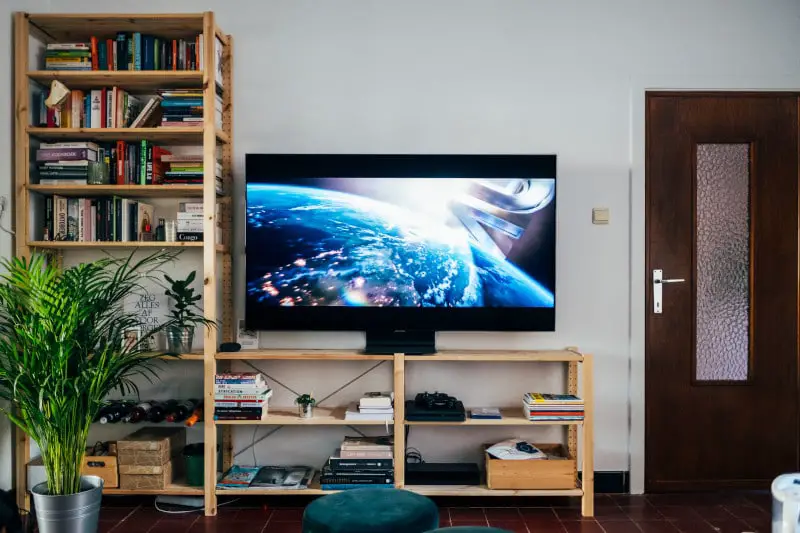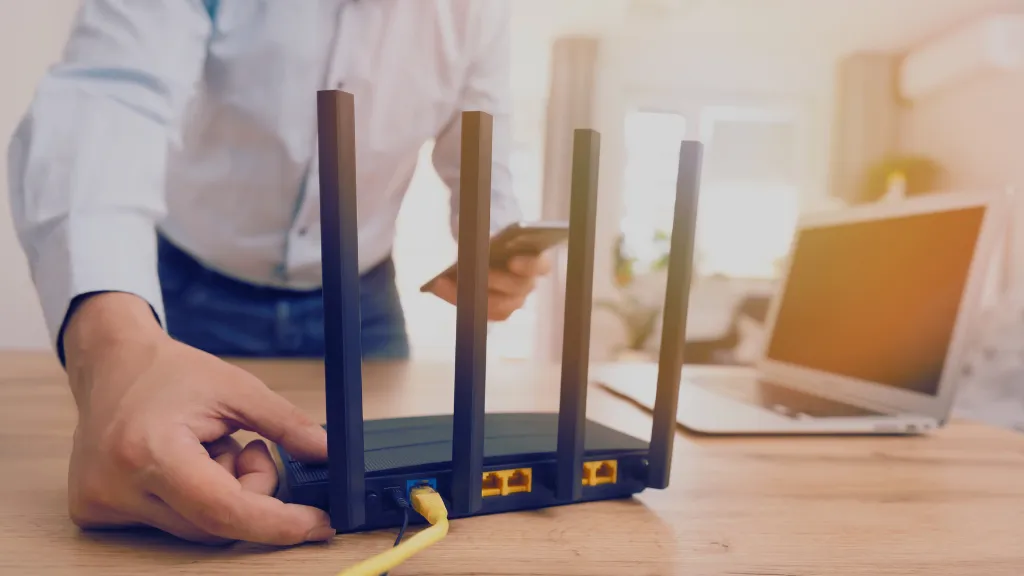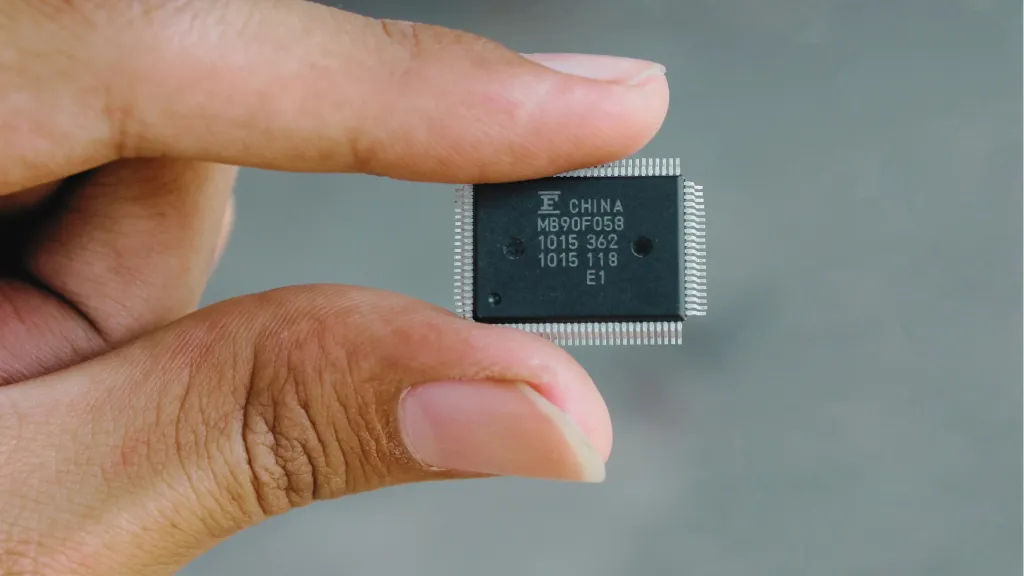Let’s start by examining some of these possible components. First, verify that your flat-screen TV didn’t just suffer from any power outage before you could use it again. As simple as this solution may seem, many people forget about it and overlook such an important detail.
If the TV was powered down, we checked its standby power supply, a small rectangular-shaped battery.
Ensure this is securely in place and properly connected to the appropriate areas. Examine any signs of corrosion or damage. If your TV’s LED indicator immediately goes off when you attempt to turn it on, even with the stand-by power supply connected, chances are high that it might need replacement.
Moreover, check for any signs of corrosion. Since rechargeable batteries experience reactions when placed inside an enclosed space (like TV sets), they tend to generate unwanted chemical compounds after several months of usage.
Always remember to keep all your appliances away from moisture and humid places so their functioning will be at its best.
The solution mentioned above is much more applicable to older TV sets. While some brands of flat-screen TV sets are equipped with internal power supplies (meaning that they don’t need batteries), others aren’t so lucky.
Most modern Samsung TVs don’t have any stand-by power supply, meaning that all their functions rely on electricity supplied directly from a nearby outlet. These products will only turn on if you plug them in and connect them to the electric grid.
Unlike conventional TVs, turning off most Samsung flat-screen TVs involves unplugging them instead of pressing the power button until the dial indicator disappears.
Some Samsung TV models can turn themselves off automatically after a certain period of inactivity. If this is your case, you won’t be able to use any button on your TV’s remote control or its main interface to turn it back on again.
Turning it back on manually will require resetting the timer that controls when it turns itself off, and you need to set it at zero if you want your appliance to stay turned on permanently.
Regarding the automatic power-down feature, ensure all options under the home menu are set accordingly (under the Settings tab). There might be other reasons this simple solution doesn’t work with your brand/model.
If this is the case, you should contact your TV manufacturer since there is a good chance it will help you fix it through an over-the-phone procedure.
Samsung TV Troubleshooting
Whether talking about plasma Samsung TV sets or Hisense flat-screen TV sets, all modern television models have one thing in common. They are much easier to operate and maintain when compared to their vintage counterparts (the old clunky tube-based TV sets).
Most of them feature regular power supplies that don’t require any batteries at all for powering up their internal circuits, meaning that they start working once direct electricity has been provided by an outlet.
Note that not all brands acquire such advanced technology right off the bat. For instance, Samsung flat-screen TVs didn’t start featuring internal power supplies until around 2010, meaning all their earlier models required a standby power supply.
Basic troubleshooting principles are highly recommended for anyone who wants to fix his/her own television set. In this case, we’ll be dealing with an older model of Samsung TV that doesn’t turn on no matter what buttons you press or dials you spin (even after checking its standby power supply).
Note that most larger television sets develop problems when they age and don’t receive proper maintenance, often requiring replacement parts.
First, check for any problems preventing you from turning on your flat-screen TV. If there are none, let’s move on to the next step: unplugging and plugging it back in. Sometimes the main power supply is only temporarily blocked or overloaded, meaning resetting it could be enough for your TV to turn back on.
We’ll assume that your TV hasn’t started working after a few minutes of attempting different combinations (unplugging/re-plugging it).
At this point, most people would recommend contacting some professional electronic techs or technicians since replacing a faulty power supply unit often involves parts replacement, meaning that it will cost you extra cash. Don’t give up just yet!
Replace Any Faulty Component
Carrying out a proper initial diagnosis with your device’s power supply board is just as important as replacing any faulty component (most likely one of its capacitors) since it won’t be able to generate enough electricity if any primary element is carrying excess or uneven current.
Let’s test all capacitors with your faulty flat-screen TV’s power supply board.
First, turn off the TV and unplug it. All capacitors can retain their electric charge for exceeding 30 minutes (even if your TV has been turned off or unplugged), meaning that you should always discharge them before attempting to work with them.
How to Test the Capacitors in Your Samsung TV’s Power Supply Board
This is only a basic example of how to properly test any faulty power supply element to determine whether or not it is causing the problem. Some of these elements might require special safe handling procedures, meaning that they should be handled by someone who knows what he/she’s doing.
Most professional electronic technicians would probably replace such a faulty capacitor with a brand-new one since repairing damaged ones isn’t always worth it (especially for older TVs).
How to Test Your TV’s Capacitors
Test whether or not one of the capacitors in your faulty TV is preventing it from turning on.
Step 1: Turn Off Your Samsung TV
Turn off and unplug your Samsung TV from its main power source. Make sure that you wait at least 30 minutes after doing so before moving on to the next step since some capacitors will still retain their charge even when disconnected from a circuit.
Step 2: Hold Down the “Power” Button
Hold down the “power” button for twenty seconds. If your flat-screen TV doesn’t turn on immediately, there might be an issue with your power supply board. Determine if one of the capacitors is damaged and might be causing the problem.
Step 3: Check Your Capacitor
Find out which part (capacitor) in your Samsung TV set’s power supply unit is faulty by conducting a continuity test with an ohmmeter. Once you’ve found that element, replace your Samsung TV power supply board’s capacitor. After doing so, your flat-screen TV should turn on right away.
Advanced Power Supply Board Troubleshooting
If none of the capacitors are faulty, another issue must occur inside your flat-screen TV set. Most likely involving its main IC chip or some other malfunctioning component.
Let’s move on to the next step, which involves an advanced power supply board troubleshooting method usually used on large Samsung flat-screen TVs.
Step 1: Open Up Your Samsung TV’s Front Cover
Open up your TV’s front cover by removing its screws from its mounting holes. Be sure not to damage this part of the set while doing so.
Remember that there will be a lot of other tiny electronic components sitting behind this cover, so take great care not to touch or bump any of them (they might get damaged if you do).
Step 2: Inspect the Capacitors
Locate and remove all capacitors whose values are between 470uF/450V and 1000uF/450V, putting them aside for now. Then, carefully inspect these parts using a bright work light and magnification tool (using a magnifying glass is usually the easiest way to inspect electronic parts) to determine if they’re faulty.
Check for any apparent damage, cracks, or other signs of physical stress, indicating that there might be an issue going on inside your flat-screen TV set.
Step 3: Test the Capacitors
Test these capacitors with an ohmmeter by placing one probe from your digital multimeter on either side, setting its resistance range to “R” (Ohms). Then, touch the remaining probe onto one of the capacitor’s terminals.
ohms: should read 0? + – xxx?
The ohm meter will display an “0” or a decimal number reading. If it displays a single “0”, then there is no continuity between your capacitors’ terminals, meaning that it isn’t faulty and, therefore, must be replaced.
On the other hand, if a decimal number is displayed by your ohm meter, then one of the terminals has some resistance (which means there is something wrong with that particular terminal). You can also check to see whether or not the other terminal is connected to anything (it should be).
Step 4: Determine the Cause of the Damage
Determine what is causing damage to those particular terminals by using a flat object to uncover any possible short circuits. For example, gently move wires and other electronic components around with your screwdriver.
When you’ve found what’s causing the damage, remove and replace that part on your Samsung TV set with that specific capacitor mentioned in Step 3.
Step 5: Test Your Samsung TV
Turn off the power to your Samsung TV once it has been put back together. Next, plug your flat-screen TV into its main power source once again. If everything turns out OK, switch over to check for any signal after turning on this device.
Please note that handling these capacitors incorrectly can cause harm or death! Be sure to use a digital multimeter. We assume no responsibility for any damage caused by acting according to these instructions.
Conclusion
Following these troubleshooting steps, you should be able to fix your Samsung TV set on your own in about three hours!
Suppose you’re still having trouble after performing these steps. In that case, you can always contact a professional technician or somebody with technical expertise who knows their way around electronic devices and their repair and maintenance.







